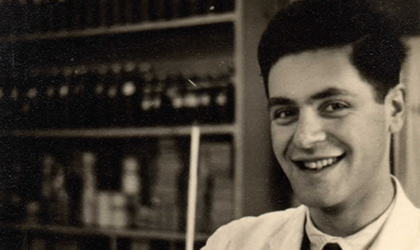
Back in the 1990s, British miners were fighting for compensation for diseases linked to coal dust exposure. Epidemiology and statistics were essential to the miners’ case, so mine operators sought to cast doubt on the data – and it fell to my father, Michael Jacobsen (pictured), to argue that the research was sound.
I tell the story of the case, and the court battle over the research, in the October issue of Significance. And this week, in the Daily Mirror, I report on memos I uncovered which show how coal authorities sought to make it “costly and unattractive” for miners and families to pursue compensation claims.
My story begins in 1968, the year my father arrived in Edinburgh to take up his new job as head of statistics at the Institute of Occupational Medicine (IOM).
The IOM was founded by the then National Coal Board (NCB) as an independent charity. Its first director, Dr John Rogan, was chief medical officer of the NCB. And it was Rogan who had set up the Pneumoconiosis Field Research (PFR) in the early 1950s. This decades-long study had been commissioned by NCB to determine the effect of coal dust particles on miners’ health.
Decades later, my father told a 2007 seminar at Glasgow Caledonian University how Rogan, “a very impressive individual indeed”, made sure he hit the ground running at IOM. Rogan gave my father little more than three months to extrapolate 10 years’ worth of PFR dust exposure data, projected over a 35-year period. Rogan wanted to know what risk that might present to a coalminer at the end of his working life.
Burying himself in probability theory and some rather complicated algebra, my father eventually produced three or four pages of calculations. Somewhat anxiously, he took his results to a colleague, Mike Attfield, for his opinion.
The calculations were okay, said Attfield – but this was a Markov Chain calculation, and they had computer programmes for that. “You don’t have to do it by hand,” he said.
Early PFR papers produced by the IOM proved to be seminal, leading to tighter airborne dust standards not just in Britain but in coal mines across the world.
So it was a shock for my father when, decades later, he discovered that the PFR work was under attack in a civil compensation claim by miners.
In what became known as the British Coal Respiratory Disease Litigation, the defendants – British Coal – tried to destroy the credibility of the very research that its predecessor, the NCB, had commissioned.
Since he had overseen the PFR work during his two decades at the IOM, my father was perhaps the obvious choice for an expert witness when lawyers for the miners went looking for help.
He knew that it was not just scientific reputations that were at stake. Some of the miners fighting for compensation for the respiratory diseases they had contracted had already died by the time the case got to court. Many more died before compensation was paid.
Going through my father’s papers following his death last year, it was clear he had mixed feelings about getting involved.
His old boss, Rogan, had once advised him to avoid getting involved in litigation surrounding medico-scientific matters.
My father wrote in a letter to one former colleague: “I heeded that advice until 9 months ago.”
“Everything that I have experienced since then convinces me that JMR [Rogan] was right. But the attacks on the integrity of the PFR … were so outrageous that I felt that I had to respond.
“I do not regret that decision, and I would like to think that, given the circumstances, even JMR might have approved.”
He might well have been right about that. Mr. Justice Turner’s 1998 ruling opened the door to compensation payments for the miners totalling more than £2 billion.
Read the full story in Significance.
About the author
Paris-based journalist Jonny Jacobsen has just completed a one-year sabbatical, during which he studied for an MA in data journalism at Birmingham City University. In a 30‑year career he has written for the Scottish national press, GQ magazine and Agence France-Presse.




